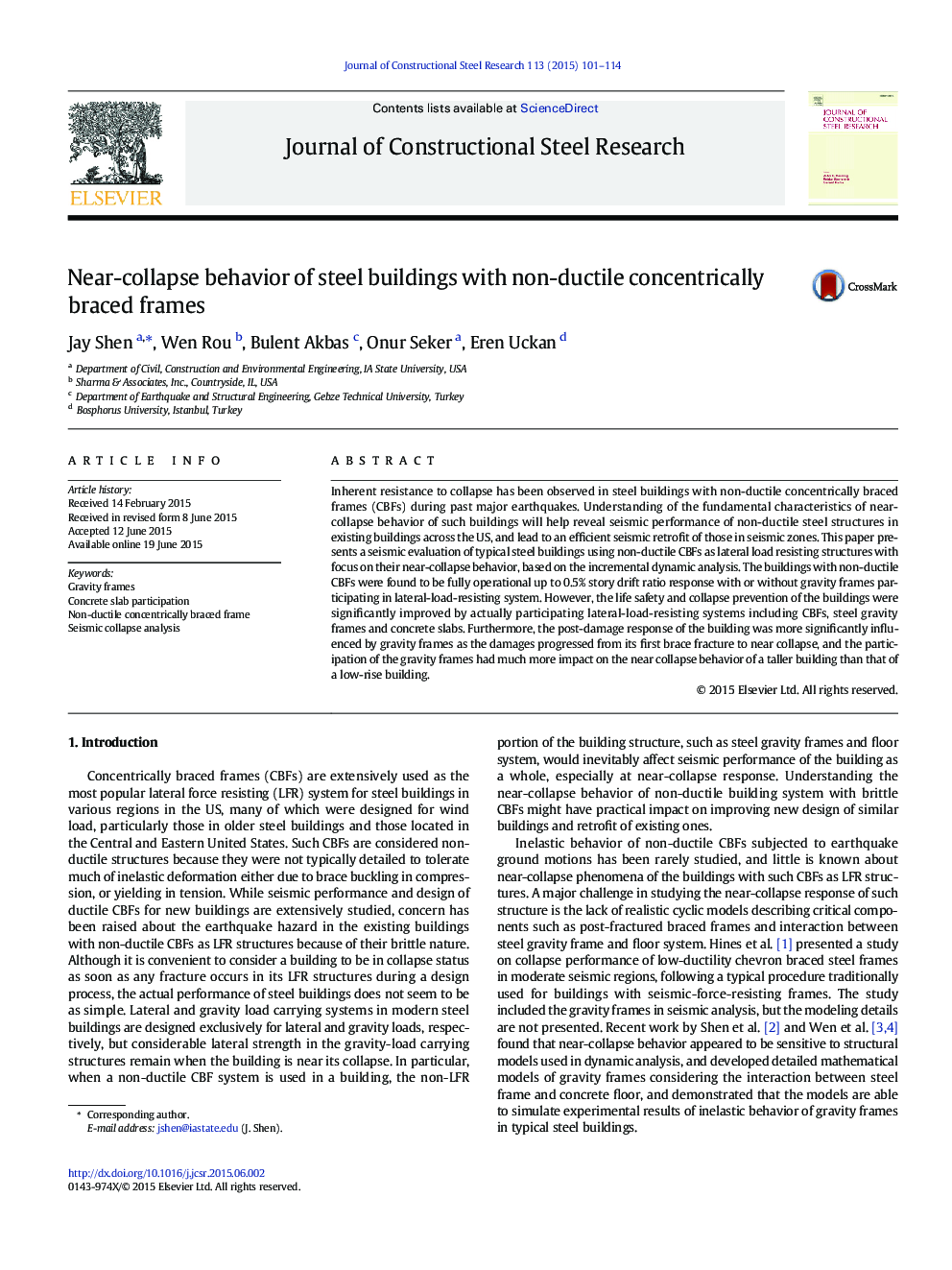| Article ID | Journal | Published Year | Pages | File Type |
|---|---|---|---|---|
| 284453 | Journal of Constructional Steel Research | 2015 | 14 Pages |
•Near-collapse behavior of steel buildings with non-ductile CBFs is significantly affected by gravity frames combined with concrete slabs.•Collapse prevention of non-seismic CBF buildings was significantly improved when the gravity frames actually participated in resisting seismic loads.•Gravity frames shall be carefully modeled and included in seismic analysis when near-collapse behavior is considered.
Inherent resistance to collapse has been observed in steel buildings with non-ductile concentrically braced frames (CBFs) during past major earthquakes. Understanding of the fundamental characteristics of near-collapse behavior of such buildings will help reveal seismic performance of non-ductile steel structures in existing buildings across the US, and lead to an efficient seismic retrofit of those in seismic zones. This paper presents a seismic evaluation of typical steel buildings using non-ductile CBFs as lateral load resisting structures with focus on their near-collapse behavior, based on the incremental dynamic analysis. The buildings with non-ductile CBFs were found to be fully operational up to 0.5% story drift ratio response with or without gravity frames participating in lateral-load-resisting system. However, the life safety and collapse prevention of the buildings were significantly improved by actually participating lateral-load-resisting systems including CBFs, steel gravity frames and concrete slabs. Furthermore, the post-damage response of the building was more significantly influenced by gravity frames as the damages progressed from its first brace fracture to near collapse, and the participation of the gravity frames had much more impact on the near collapse behavior of a taller building than that of a low-rise building.
